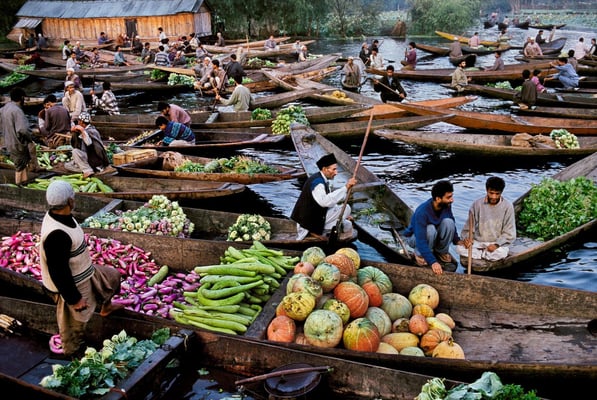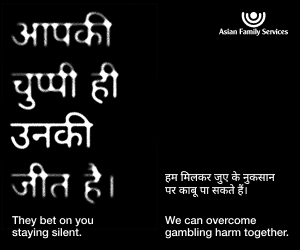Understanding the Kashmir problem

After partition in 1947, both India and Pakistan retained British as the heads of their respective forces. General Busher was appointed C-in-C of the Indian army and General Gracey became the C-in-C of the Pakistani army. Lord Mountbatten (Governor-General of Independent India) presided over the proceedings of the cabinet defence committee of India.
A weak Britain (after WW2) roped in the support of resourceful US to contain Russia and China. The US/UK started equipping and funding the ally Pakistan who unlike India accepted stationing of their troops on its soil. Encouraged by the US and the UK, when Pakistan invaded India to grab Kashmir by force in 1947–48, Indian C-in-C exaggerated the Indian army limitations and Indian forces were not allowed to push back the invaders. Instead, the Indian government was advised by its Governor-General to take the case to United Nations where the US vetoed almost every resolution that would condemn Pakistan’s unlawful action. This resulted in a situation where India was still waiting for a decision whereas Pakistan outplayed both the US and the UK by forming a separate alliance with their enemy China. To keep its options open and strengthen its relations, Pakistan gifted parts of Jammu and Kashmir to China and even agreed to facilitate its access to the Indian Ocean. Karakoram highway and Gwadar sea port are few examples of the resulting massive Chinese investments.
Map:

The current map of Jammu and Kashmir—the northernmost state of the Republic of India—clearly shows that China has been a major gainer in the US/UK misadventure.
Exploited Pakistan
After realising their diplomatic failures, the US and the UK still could not exit from Pakistan as a new situation resulted from the Russian invasion of Afghanistan. Again, aid and ammunition started flowing into further nourish the army in a nation of poor and hapless people. In subsequent years, whenever the army might in Pakistan was challenged by any ‘democratic’ process, it resulted in coups. And as the supplies were being directed through Saudi Arabia and its allies, with these came the hardcore Wahhabi beliefs replacing the prevailing milder Sufi version. This all resulted in an exploited nation with insincere friends such as UK/US/Arabs, unwanted but unavoidable Chinese army bases, and a self-destructive national army that was using Kashmir as an excuse to keep the masses hooked on to an unjust system, never analysing that Kashmir does not even produce enough potatoes and is totally dependent on the dole from the rest of India.
Today, Pakistan has become the destination of ‘training’ for indoctrinated individual from any part of the world, and when the US drones kill common Pakistanis, the rich and powerful army just looks the other side; it seems to be too busy running the ‘business’. Exploited masses do not seem to have any hope of a better life.
Incommensurate Indian response
Fruits of development in India may be slowly reaching the masses, and the ever-strengthening democracy may be giving hope. While India is abandoning its pseudo-socialistic stance, the western world may be realising its debacle and may find India as a natural ally. But with regards to Kashmir, India is yet to show a commitment. It is a failed response.
The ground reality is that separatist infests only five out of the 22 districts (i.e. a total of only 15% of Jammu, Kashmir, and Ladakh). There haven’t been any protests against India in the rest 85%area till date. The beneficiaries of the chaos on India side include the families of Abdullahs, Sozs, Seeds, Geelanis, and the likes. These thugs are party to encouraging religious fundamentalism while keeping their children tucked away in other parts of India and even overseas. These culprits have taken every opportunity to amass riches through belligerent corruption and have maintained their grip on power by manipulations. Successive Indian governments have stayed as mute spectators to appease fundamentalists for vote politics. In a country where Sikh terrorism was dealt with a heavy hand, the Muslim terrorism is given political connotation to confuse general masses. The result of this failed, and an inappropriate response is that in 1989–90,700,000 Hindus of Kashmir were forced to leave their homes and are now living as refugees in their own country. Religious fundamentalism has been instrumental in the ethnic cleansing of pundits from Kashmir, and the failure of the Indian state to protect its own citizens nullifies all other nation-building steps put together.
Normalisation
A multidimensional process of normalisation should include:
- The civilised world needs to help democratic institutions in Pakistan to wrest control from the army. India’s size and the foundations of peaceful coexistence need to be recognised with a position on Security Council. Any obsession to bring Pakistan at par with India needs to be replaced by supporting India to gain balance with China.
- India needs to localise the problem by reorganising the state. Jammu and Ladakh need to be given the status of separate states in the union of India.
- Original inhabitants of Kashmir, the pundits of Kashmir need to be resettled, with dignity and honour by creating a separate area with a union territory status within Kashmir.
- Subcontinent population needs to lift their own game rather than be happy playing second fiddle to Arab Sheikhs, and every religious fundamentalist needs to understand that the diversity in beliefs paves the ways for coexistence and fresh ideas.
- The existing line of control needs to be accepted as an international border.
Today, the Indian subcontinent is home to one of the poorest populations in the world and the only way people in this area can prosper is by diffusing the religious affiliations with modern-day education.
Veer Khar is President of the
Manukau Indian Association.
Views expressed above are his own.
After partition in 1947, both India and Pakistan retained British as the heads of their respective forces. General Busher was appointed C-in-C of the Indian army and General Gracey became the C-in-C of the Pakistani army. Lord Mountbatten (Governor-General of Independent India) presided over the...
After partition in 1947, both India and Pakistan retained British as the heads of their respective forces. General Busher was appointed C-in-C of the Indian army and General Gracey became the C-in-C of the Pakistani army. Lord Mountbatten (Governor-General of Independent India) presided over the proceedings of the cabinet defence committee of India.
A weak Britain (after WW2) roped in the support of resourceful US to contain Russia and China. The US/UK started equipping and funding the ally Pakistan who unlike India accepted stationing of their troops on its soil. Encouraged by the US and the UK, when Pakistan invaded India to grab Kashmir by force in 1947–48, Indian C-in-C exaggerated the Indian army limitations and Indian forces were not allowed to push back the invaders. Instead, the Indian government was advised by its Governor-General to take the case to United Nations where the US vetoed almost every resolution that would condemn Pakistan’s unlawful action. This resulted in a situation where India was still waiting for a decision whereas Pakistan outplayed both the US and the UK by forming a separate alliance with their enemy China. To keep its options open and strengthen its relations, Pakistan gifted parts of Jammu and Kashmir to China and even agreed to facilitate its access to the Indian Ocean. Karakoram highway and Gwadar sea port are few examples of the resulting massive Chinese investments.
Map:

The current map of Jammu and Kashmir—the northernmost state of the Republic of India—clearly shows that China has been a major gainer in the US/UK misadventure.
Exploited Pakistan
After realising their diplomatic failures, the US and the UK still could not exit from Pakistan as a new situation resulted from the Russian invasion of Afghanistan. Again, aid and ammunition started flowing into further nourish the army in a nation of poor and hapless people. In subsequent years, whenever the army might in Pakistan was challenged by any ‘democratic’ process, it resulted in coups. And as the supplies were being directed through Saudi Arabia and its allies, with these came the hardcore Wahhabi beliefs replacing the prevailing milder Sufi version. This all resulted in an exploited nation with insincere friends such as UK/US/Arabs, unwanted but unavoidable Chinese army bases, and a self-destructive national army that was using Kashmir as an excuse to keep the masses hooked on to an unjust system, never analysing that Kashmir does not even produce enough potatoes and is totally dependent on the dole from the rest of India.
Today, Pakistan has become the destination of ‘training’ for indoctrinated individual from any part of the world, and when the US drones kill common Pakistanis, the rich and powerful army just looks the other side; it seems to be too busy running the ‘business’. Exploited masses do not seem to have any hope of a better life.
Incommensurate Indian response
Fruits of development in India may be slowly reaching the masses, and the ever-strengthening democracy may be giving hope. While India is abandoning its pseudo-socialistic stance, the western world may be realising its debacle and may find India as a natural ally. But with regards to Kashmir, India is yet to show a commitment. It is a failed response.
The ground reality is that separatist infests only five out of the 22 districts (i.e. a total of only 15% of Jammu, Kashmir, and Ladakh). There haven’t been any protests against India in the rest 85%area till date. The beneficiaries of the chaos on India side include the families of Abdullahs, Sozs, Seeds, Geelanis, and the likes. These thugs are party to encouraging religious fundamentalism while keeping their children tucked away in other parts of India and even overseas. These culprits have taken every opportunity to amass riches through belligerent corruption and have maintained their grip on power by manipulations. Successive Indian governments have stayed as mute spectators to appease fundamentalists for vote politics. In a country where Sikh terrorism was dealt with a heavy hand, the Muslim terrorism is given political connotation to confuse general masses. The result of this failed, and an inappropriate response is that in 1989–90,700,000 Hindus of Kashmir were forced to leave their homes and are now living as refugees in their own country. Religious fundamentalism has been instrumental in the ethnic cleansing of pundits from Kashmir, and the failure of the Indian state to protect its own citizens nullifies all other nation-building steps put together.
Normalisation
A multidimensional process of normalisation should include:
- The civilised world needs to help democratic institutions in Pakistan to wrest control from the army. India’s size and the foundations of peaceful coexistence need to be recognised with a position on Security Council. Any obsession to bring Pakistan at par with India needs to be replaced by supporting India to gain balance with China.
- India needs to localise the problem by reorganising the state. Jammu and Ladakh need to be given the status of separate states in the union of India.
- Original inhabitants of Kashmir, the pundits of Kashmir need to be resettled, with dignity and honour by creating a separate area with a union territory status within Kashmir.
- Subcontinent population needs to lift their own game rather than be happy playing second fiddle to Arab Sheikhs, and every religious fundamentalist needs to understand that the diversity in beliefs paves the ways for coexistence and fresh ideas.
- The existing line of control needs to be accepted as an international border.
Today, the Indian subcontinent is home to one of the poorest populations in the world and the only way people in this area can prosper is by diffusing the religious affiliations with modern-day education.
Veer Khar is President of the
Manukau Indian Association.
Views expressed above are his own.









Leave a Comment